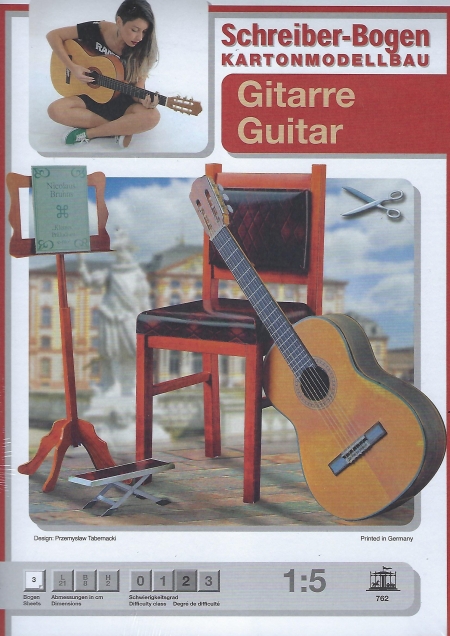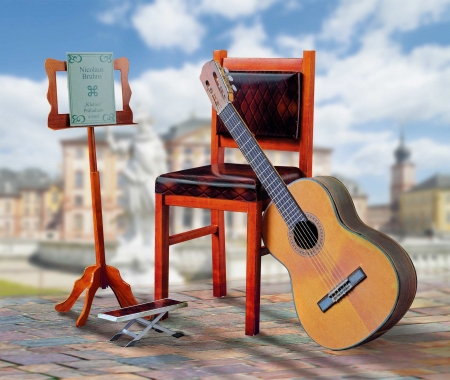SCHREIBER Guitar 1:5
Manufacturer: SchreiberItem-No.: SCH762
1 Piece in stock
Product description
Schreiber cardboard model kit for the realization of a Guitar in the scale 1:5
Number of bows: 3
Dimensions of the build model:
Length: 21cm
Width: 8cm
Height: 2cm
Level: 2
Guitar
The guitar is considered to be one of the most popular musical instruments. There are many different types of guitar. This model shows a classical concert guitar. It belongs to the family of string instruments and plucked instruments. The word guitar comes from the Spanish word “Guitarra”, but was already common in the Arab and Ancient Greek world. The history of the guitar is thousands of years old. A relief in a Babylonian temple already shows an instrument being played that is similar to a lute, which is related to the modern guitar. Women playing instruments similar to the guitar can also be seen on drawings from the time of the Egyptian Pharaohs.
The oud, which was brought to Spain by the Moors in the 10th century, is considered to be the precursor of the guitar. In the Renaissance the lute was developed from the oud. Based on the model of the lute, in Spain the “vihuela” was created, which already had a flat resonance body. Changes in music also had consequences for the instruments. In the Baroque period, chords played an important role. In the Classical period melody was more important. Accordingly, the instrument had to be adapted. This led to the fact that soon the vihuela no longer played an important part. In the 19th century the stringing of the guitar was changed. From then on, instead of five strings, there were six. The pitch of the strings was taken from other instruments. In this way the guitar was created in its modern form.
The construction of a guitar is divided into three parts: the resonance body, the neck and the headstock. The resonance body consists of back and ribs made of hard wood and a top of soft wood. The sound hole is situated in the top. The tailpiece, on which a small bridge fixed, is glued next to the sound hole. With most guitars, the neck is slightly curved at the back and at the front it holds the fretboard. It is divided into frets, which make it easier to grip the chords. The fretboard is made mainly from hard wood and stretches from the sound hole over the neck to the nut between neck and headstock. The headstock holds the tuning mechanism. The strings are fixed in the tailpiece and are drawn over the bridge, sound hole, fretboard and nut. They are wound round the tuning keys and tightened. The tighter a string is pulled, the higher its pitch. The strings are mostly made of nylon. They normally have a pitch range of two octaves and a basic tone in the pitches E, A, d, g, h and e¹.
In addition to the concert guitar, the western guitar is also very popular. It has metal strings. Concert guitars are particularly suitable for learning to play the instrument. According to a study, in the year 2015 about 120,000 pupils had guitar lessons in Germany. Hence, on the popularity scale the guitar takes only second place to the piano. Many people also teach themselves how to play this instrument.
product details
| Item-No. | SCH762 |
| EAN | 9783870297626 |
| Manufacturer | Schreiber |
| Stock | 1 Piece |
| Delivery time | 3-4 Days |
| Weight | 0,30 kg |
| Scale | 1:5 |



